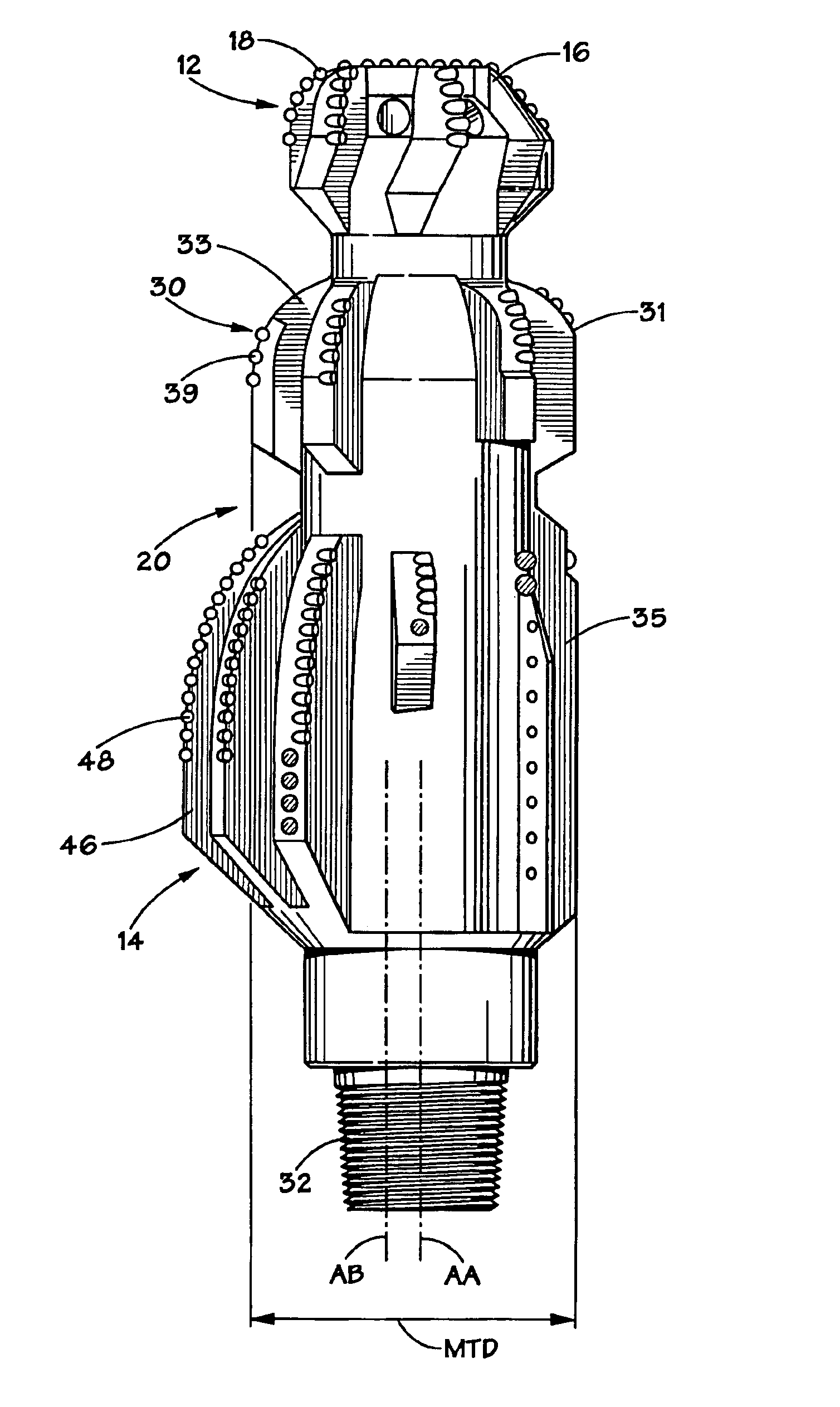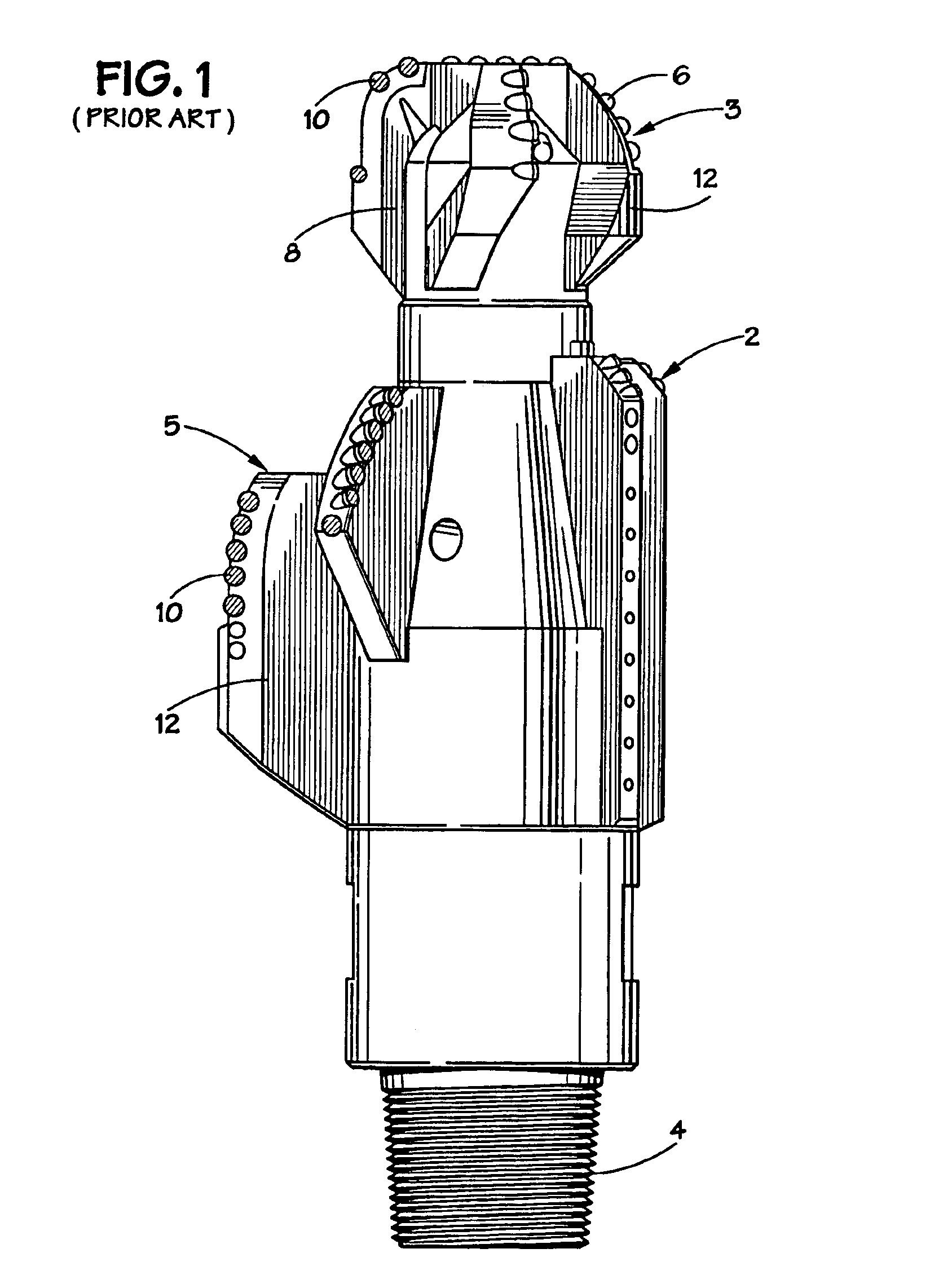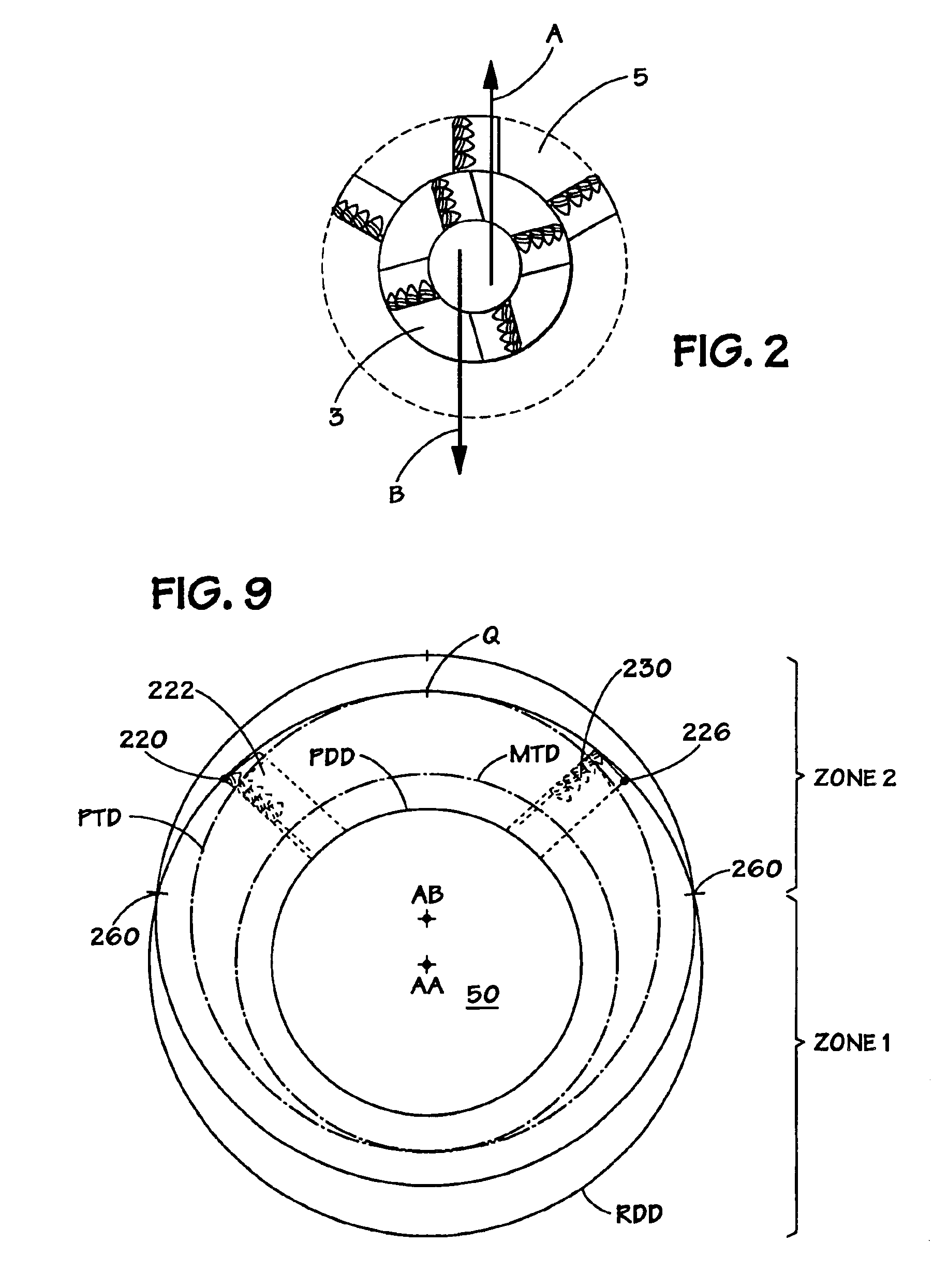Sub-reamer for bi-center type tools
a tool and sub-reamer technology, applied in the field of drill bits, can solve the problems of high stress on drilling equipment, high torque, directional drilling control problems, etc., and achieve the effect of improving the wear characteristics of tools and enhancing the stability of boreholes
- Summary
- Abstract
- Description
- Claims
- Application Information
AI Technical Summary
Benefits of technology
Problems solved by technology
Method used
Image
Examples
first embodiment
[0040]the present invention may been seen by reference to FIGS. 5-6. In these Figures there is illustrated a bi-center tool 100 which includes a pilot bit section 102 and a reamer section 104 which are oriented about the tool in the fashion described above with respect to the general embodiment. The tool 100 defines a rotational axis “AA” and a maximum tool diameter “MTD”, as also defined above in relation to the general embodiment.
[0041]A sub-reamer 108 is positioned intermediate of the pilot 102 and reamer 104 sections. In this embodiment, the sub-reamer 108 is provided with a plurality of cutting blades 110 which define endpoints 111 which extend to a distance less than or equal to the maximum tool diameter “MTD”, as measured from the rotational axis “AA”. These cutting blades 110 are radially distributed in an arc greater than or equal to 180 degrees about the sub-reamer 180. In a preferred embodiment, endpoints which extend the same distance from “AA” and generally extend about...
second embodiment
[0042]the invention may be seen by reference to FIGS. 7-8. In these Figures is illustrated a bi-center tool 140 which includes a pilot section 142, a reamer section 144 and a sub-reamer section 150 whose respective orientation has been described above. Tool 140 defines a rotational axis “AA” and a pass-through axis “AB”. The rotation of the tool about the pass-through axis “AB” defines a pass-through diameter “PTD”. The maximum tool diameter “MTD” and reamer drill diameter “RDD,” as defined above, are also illustrated.
[0043]In this embodiment, the cutting blades on the reamer section 144 describe an arc which further defines a midpoint “Q.” This midpoint “Q” can be determined by bisecting the linear distance between the endpoint 161 on the leading edge 160 of the first blade 162 and the endpoint 163 on the trailing edge 166 of the last blade 168, as illustrated.
[0044]Consistent with previous embodiments, the sub-reamer section 150 is provided with a number of cutting blades 152, eac...
third embodiment
[0048]the invention is illustrated at FIGS. 9-10 in which is disclosed a bi-center downhole tool 200 which includes a pilot section 202, reamer section 204 and sub-reamer section 212, as described above in relation to the prior embodiments. Tool 200 defines a rotational axis “AA” and a pass-through axis “AB”, as illustrated in both FIGS. 9-10. Consistent with prior embodiments, the tool defines a maximum tool diameter as indicated at “MTD”. The rotation of the tool about the pass-through axis “AB” defines a pass-through diameter “PTD”. The rotation of the reamer section 204 about the rotational axis defines a reamer drill diameter “RDD”. (See FIG. 9).
[0049]The cutting blades or upsets 206 disposed on the reamer section 204 describe an arc which further defines a midpoint “Q”. In this embodiment, this midpoint “Q” is also determined by bisecting the linear distance between the endpoint of the leading edge 220 of the first blade 222 and the endpoint of the trailing edge 226 of the las...
PUM
 Login to View More
Login to View More Abstract
Description
Claims
Application Information
 Login to View More
Login to View More - R&D
- Intellectual Property
- Life Sciences
- Materials
- Tech Scout
- Unparalleled Data Quality
- Higher Quality Content
- 60% Fewer Hallucinations
Browse by: Latest US Patents, China's latest patents, Technical Efficacy Thesaurus, Application Domain, Technology Topic, Popular Technical Reports.
© 2025 PatSnap. All rights reserved.Legal|Privacy policy|Modern Slavery Act Transparency Statement|Sitemap|About US| Contact US: help@patsnap.com



